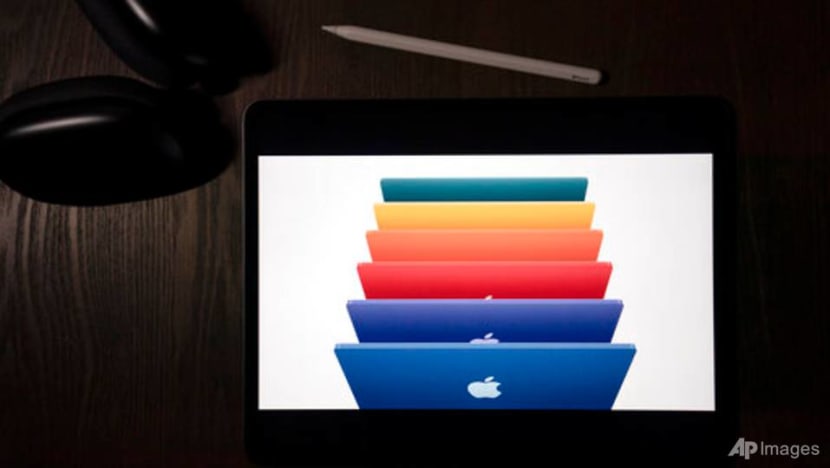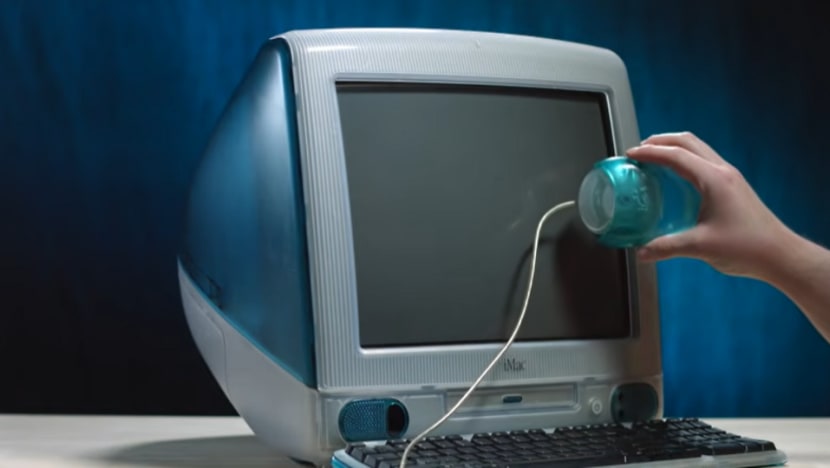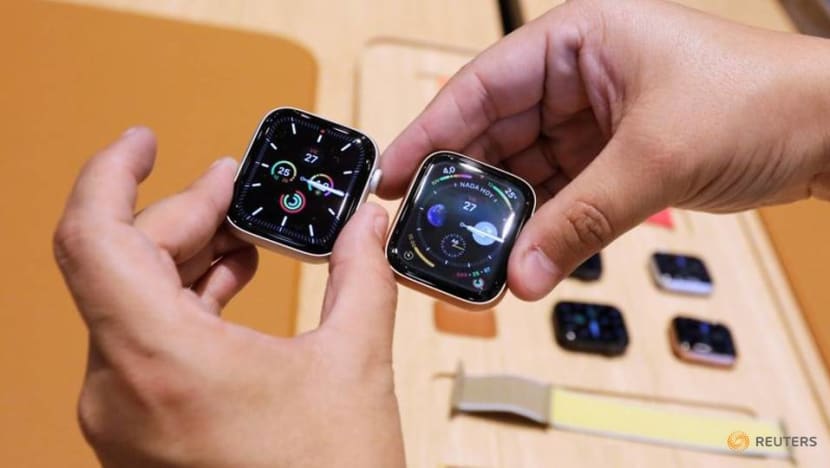commentary Commentary
Commentary: Gulf between Apple patrons and PC users just got wider
The introduction of the New iMac moves the tech giant one step closer to an ambitious goal, says SUSS’ Dr Vanessa Liu and Dr Lau Kong Cheen

In this illustration photographed in La Habra, Calif., the new iMac computers are introduced during a virtual event held to announce new Apple products on Apr 20, 2021. (Photo: AP/Jae C. Hong)
SINGAPORE: Apple recently launched the new iMac. Its most striking element? Its availability in a beautiful range of bright colours.
It comes with Apple’s very own M1 processor coupled with a number of appealing features that might interest some Apple enthusiasts.
Although Apple’s iMac seems timely seeing how more people are working from home and might be looking to upgrade their computers, some computer enthusiasts have said there wasn’t anything impressive about this new personal computer. But that would be missing the forest for the trees.
Apple certainly is not launching a new PC to attract attention or refresh a product line.
READ: Commentary: The iPhone 11 and Apple’s most ambitious play ever
READ: Commentary: Does tiny Singapore really need a third Apple store?
No, Tim Cook is moving a big chess piece as he leads Apple towards a grand “checkmate”. And he has a cunning plan.
AN IMAGE MAKE-OVER
Yes, Apple is working their way towards consolidating a brand image. The iMac’s new colours has something to do with this where playing on nostalgia is a key marketing strategy.
During the days of Steve Jobs, many of Apple’s products portrayed a brand personality that was sleek, bright, exciting and fun. Kids born in the 1980s and 1990s would know.
We saw this in their iconic iMac G3 and iPod which came in multiple colours. Their advertisements accentuated this too.
Apple epitomised a technology driven brand with a cult personality. The iMac G3 was the first brave personal computer to jettison the floppy disk, replacing this with what has become a universal standard: The USB port.

This strategy works because Apple knows in the past few years, it has been drifting. Their products have not been really outstanding.
Their concentration has been focused on feeding the appetite of the global demand for the highly profitable iPhones. Products came in only two to three shades of colours (if you call white, black, gold and silver colours).
Sure their products remained stylish, but the lack of bold colours just killed the unique personality once so closely associated with Apple's stuff.
Perhaps Apple knows this and therefore launched the iPhone XR and Apple watches in a wide array of hues – with six bright colours for the sleek iPhone XR and an endless spectrum of Apple watch wrist brands.
This desire to bringing back a strong aura shows – not only in their ads, but in their iconic floating Apple stores and so much more.
(Listen to two business observers unpack what's behind Apple's iPhone 12 design on CNA's Heart of the Matter podcast:)
ALSO ABOUT WHAT LIES BENEATH: HARDWARE
But Apple is signalling something else too. The thing is, Apple’s cool factor has always gone beyond the way its products look. That’s just the cherry on the top. It’s about the dummy-proof, superior user experience and state-of-the-art technology.
Fans of Apple love their stuff for their user friendliness, speed and efficiency, where the microprocessor is at the heart of it all.
And here’s where discussions over the iMac’s new look have obscured the bigger shift underway.
The new iMac is the first of Apple's desktops to be fitted with Apple’s proprietary M1 processor previously installed in MacBooks and Macbook Air, demonstrating how the tech giant is serious about shifting away from its 15-year partnership with chipmaker Intel.
READ: Commentary: The US-China tech rivalry is fracturing the world and affecting trade, firms and jobs
Sure this isn’t groundbreaking. The M1 chip shares the same engineering architecture as the A-series chips in Apple smartphones and tablets.
But it upgrades the iMac’s performance substantially, with programmes running up to five times faster according to some estimates. A best-in-class, it easily outperforms all past Intel chips used.
This entire shift, requiring major R&D investments in producing their propriety microprocessors, is in line with Apple CEO Tim Cook’s belief in the company’s long-term strategy of fully controlling core technologies behind their products, costs and innovation cycles.
After a brutal US-China trade war and growing uncertainty over a semiconductor shortage, this is amazing news. Apple can be independent and self-sufficient.
They can focus on widening the performance gap between them and the competition. Stronger hardware performance provides the foundation to a better, more efficient user experience.

But the pervasive use of the M1 chip could alienate Windows-based software from Apple products in the future. Though the ARM version of Windows can be installed on M1-based machines, not all Windows-based applications (including many games) are supported.
BUILDING THE APPLE ECOSYSTEM
With the incorporation of its M1 chip into all Apple products, Apple is on stronger footing to build an even bigger ecosystem.
With all Apple products operating on a common technology platform, users can look forward to a seamless use of apps across all devices and a hassle-free user experience across all Apple devices in the future.
Developers, data scientists and content creators will love the built-in neural engine in the M1 chip, which makes machine learning in tasks like video-editing and voice recognition 15 times faster. Compared to even the most powerful Intel chips, M1 presents the fastest single-core performance.
And with the introduction of the subscription model, Apple’s ecosystem may expand its empire to more customers and app developers.
READ: Commentary: Underwhelming AirPods Pro? Here’s why Apple users remain incredibly loyal
With an integrated ecosystem, users may be glued to Apple even more. For example, iPhone users prioritise an iMac when they consider purchasing a personal computer.
More existing users are using services like Apple Pay and Apple TV across iPhones, Apple Watches, iPad, iMac and MacBooks, with such integrated Apple lifestyle services seeing few alternatives”, further widening the gap between Apple and non-Apple users. It’s hard to imagine an Apple user making a decision to switch to a range of alternatives after being locked into the Apple experience.
Few firms have tried to replicate Apple’s strategy, with none succeeding. Microsoft, with its massive base, tried to create a phone operating on Windows Mobile but they could not get enough vendors to create apps. This consequent lack of apps drew tepid response from customers, and marked the demise of the initiative.
This giant ecosystem of apps is another Apple advantage. The firm knows this and has been aggressive in incentivising app developers to redevelop and update their apps – to ensure their huge customer base is kept satisfied.
The vendors only need to perform a one-off code re-writing and update; and the revised app will be operable across different Apple products.

READ: Commentary: The glorious magic of Apple’s buzz machine
Vendors too know Apple’s sticky ecosystem is an attractive platform to test market responses for new apps. This is evident from the exclusive availability of Clubhouse on Apple Store only when launched in 2020.
And for the use of many apps at one time to go off without a hitch, the hardware has to be solid.
DISTORTION FIELD IS REAL
While the M1 chip may support convergence of functions across different product lines, Apple must be careful that their products don’t inadvertently cannibalise each other – something that happened to the MacBook and iPad in 2013.
Thus far, Apple’s bold move to enhance both hardware and software performance is strengthening the distortion field for Apple customers.
Looking ahead, the ongoing debate as to whether the premium market is large enough to sustain Apple, known for its vibrant and distinctive style.
Apple could continue to focus on its niche market of tech-savvy content creators in the media industry and the luxury segment who benefit from Apple’s growing entertainment and personal lifestyle ecosystem.
READ: Commentary: Apple is ahead of the curve with iPhone 12. That may be a problem
For sceptics concerned about the company’s future growth, a solution probably lies in the last chess piece: Apple could introduce an even more comprehensive subscription-based model where customers can choose to pay a monthly fee for Apple products of their choice plus access to the entire ecosystem. This could make Apple somewhat affordable and yet not devalue its premium price positioning.
This may also prolong the lifespans of older product versions where pricing can be lower, allowing for price discrimination without diluting the brand.
A hybrid of these two models will sustain market growth, encourage demand and draw more customers into their ecosystem.
The new iMac may just be a glimpse of that promised land Apple has yet to reveal to us.
Dr Vanessa Liu and Dr Lau Kong Cheen are senior lecturers, Marketing Programme at the School of Business in the Singapore University of Social Sciences.

















